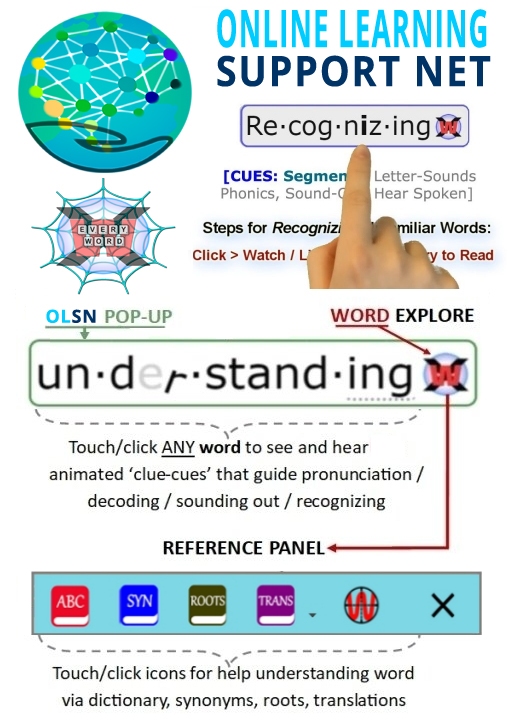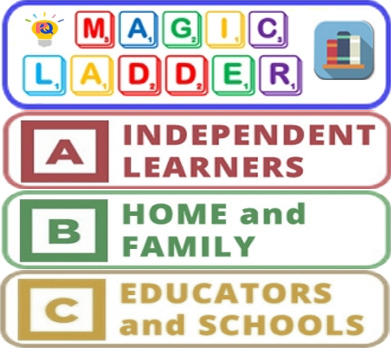The Brain
Note: Remember to click on any word on this page to experience the next evolutionary step in technology supported reading.
The Self-Organizing Brain
Most surprisingly is that brains are not, it’s hard to say this but, brains are not designed the way we would design any machine. They are not built the way we would build a machine. We don’t take the parts and put them together to build a whole. In fact, what happens is just the other way around. The whole starts out, it’s just undifferentiated. The parts aren’t distinguished from each other and they become more and more different from each other. The system becomes more and more complicated. The problem is the process is very indirect.
It is not like building something from a plan. It’s a very indirect process. It became very clear that this process is very much what we would call today, self organization. A lot of the information that goes into building brains is not actually there in the genes. It’s sort of cooked up or whipped up on the fly as brains develop. And so if one is to explain how a very complicated organ like the brain actually evolved, changed it’s function to be able to do something like language, one has to understand it through this very complicated prism of self organization and a kind of mini-evolution process that goes on as brains develop in which cells essentially compete with each other for nutrients. Some of them persist and some of them don’t. Some lineages go on to produce vast structures in the brain. Other lineages get eliminated as we develop, in some ways just like a selection process in evolution.
We are going to have to think, in a sense, like biology thinks, like embryology works in this kind of self organizing, self evolving-like logic to get back at what actually causes things to occur and develop in complex ways.
I think this is the case with language itself. As it’s passed from generation to generation it has a kind of self organizing and evolution-like character to it.
Language has changed the environments in which brains have evolved. That changes the picture radically because now one can look at the brain, so to speak, with an inside out perspective of the problem and ask the question, “What’s different about human brains and how might that difference tell us something about the forces that shaped it?
Terrence Deacon, Professor of Biological Anthropology and Linguistics at the University of California-Berkeley. Author of The Symbolic Species: The Co-evolution of Language and the Brain. Source: COTC Interview – http://www.childrenofthecode.org/interviews/deacon.htm#Self-OrganizingBrain
Brain Structures
Dr. Charles Perfetti: The brain will develop neuro-structures that generally are adapted from other uses. There’s no reason to think the brain has any module in it in the beginning for reading. Written language is too recent a human development to have allowed brain evolution to accommodate it. So, I think this is another aspect of the difficulty.
The brain has resources it can use for vision, in particular, and it has to recruit these resources for reading. Those visual resources actually are not maximally tuned for distinguishing the difference between an E and a C, for example. There are levels of the visual cortex that can perform that task but it’s quite different from being able to tell one face from another or one building from another, and so on. The high spatial frequencies have to be resolved.
Now, once that part is done and once you connect these visual form perceptions with your language, that part, speaking loosely, could be considered a module. The connections are pretty constrained from visual areas to temporal and frontal areas that together seem to support rapid word identification and so some of those areas are shared with spoken language as well. So, at that point once you’ve got the visual forms, and not just the forms but mapping them to the spoken language forms, then you can talk about a system requiring some modularity; behaving as if it’s a highly skilled in text system using sub-brain networks that are in some sense specialized for that. But in the beginning you have to recruit other resources and apparently that can be a problem.
David Boulton: Those resources would also perform, following along your trajectory here, the differentiation inside of word sounds in a way that’s otherwise artificial and that is unique to the kind of distinctions in word sounds necessary to map to the code. So, it’s not the same kind of attention to sound differences that are necessary to participate in oral conversation.
Dr. Charles Perfetti: Exactly. Right, and so again, it’s attention to form, a much more analytic form, little pieces of form that in themselves have no meaning.
David Boulton: So, in a natural setting we’re more attuned to seeing the difference in larger wholes rather than in making differences between such small particulars.
Dr. Charles Perfetti: Right. I think that’s a big part of it.
David Boulton: That’s why overall what were trying to get a handle on is whether we can describe this lower part of the process as if its job is to simulate a stream of language inputs to comprehension and fabricate that simulation according to the way the brain has learned to process the code through the visual and auditory modalities, which is providing it with information and instruction.
Dr. Charles Perfetti: I like that. I think that’s a good way to describe it. I find that very compatible with the way I think about it. Those are your words, not mine, but I think that’s a good way of thinking about it.
Charles Perfetti, Professor, Psychology & Linguistics, University of Pittsburgh. Source: COTC Interview: http://www.childrenofthecode.org/interviews/perfetti.htm#BrainStructures
A Different Kind of Brain
So, for me, taking the inside out perspective and looking at brains for clues to language rather than the other way around, I ask the question this way. This is probably the most significant departure from any kind of behavior that we’ve seen in any other species and it’s radically different in many ways from what other species can do. Such a large-scale difference and probably the biggest difference between us and other species ought to be reflected in some of the biggest differences between human brains and non-human brains.
With that as a kind of guiding hypothesis, not even a hypothesis, a sort of heuristic as to what to look for, I ask the question, “So what is different about human brains, if one could categorize in a systematic way, what is really different about human brains? Wouldn’t that tell us something about language?”
The truth is we don’t know much more now about intelligence and what its relationship is to whole brains than we did a century ago. We don’t really know how whole brains work yet. We don’t have a sort of general theory that everybody agrees upon, or even is close to agreeing upon.
Terrence Deacon, Professor of Biological Anthropology and Linguistics at the University of California-Berkeley. Author of The Symbolic
Species: The Co-evolution of Language and the Brain. Source: COTC Interview – http://www.childrenofthecode.org/interviews/deacon.htm#ADifferentKindofBrain
Brain Size Differentiation
On the other hand, this major change, if it’s not just blowing the thing up larger and adding a whole lot more to everything, if it is somehow distributed in an interesting way, that distribution of how the same parts got changed and enlarged with respect to each other might tell us something about what that difference is. In fact, it tells me something very important and that is when you change the size of something you also change the relationships between the parts. We know that a small business, for example, can have one kind of organization for doing things whereas a large business, ultimately just simply because of its size, has to have all kinds of middle managers and different kinds of bureaucracy and people don’t get to talk to everybody. The brain is a different kind of brain because it’s bigger. The connections are going to be different because it’s bigger. That is going to be a clue to it as well.
I began to look at quantitative issues and with a developmental perspective, how changes in size might change the circuits, that is, how circuits might respond to this. I think for me that has been the biggest source of insights, the biggest source of clues. They’re not answers, they’re clues. That is, I think that the connections are different because the brain is bigger and because not all parts expanded at the same rate. I think that’s the first inside out clue to what is important about this language difference. What was the change in the hardware that supported this new kind of communication and cognition?
Terrence Deacon, Professor of Biological Anthropology and Linguistics at the University of California-Berkeley. Author of The Symbolic
Species: The Co-evolution of Language and the Brain. Source: COTC Interview – http://www.childrenofthecode.org/interviews/deacon.htm#BrainSizeDifferentiation
Old Logic of the Brain
But language, of course, is broken up according to a logic that has to do with communication, has to do with symbols, has to do with the constraints we have on interacting, perhaps, with speech sounds, perhaps with gesture. The logic of the brain is a very old logic and a very conserved logic. It’s the logic of embryology. It’s the logic of self organization. In fact, it’s the logic that has been shared with a common ancestor that goes back well before vertebrates.
We can find hints as to the organization of the genes that develop brains in fly brains. That logic has probably not changed much. That logic is the logic of the organization of brains. There’s unlikely to be a nice, neat direct map between what we see in the external world of language and what we see inside brains. In fact, the map may be very, very confused and very, very different inside the brain, that is, how the brain does what we see externally in language.
It’s not easy to predict from what’s produced in the world what’s going to happen inside, so to speak, in the body. I think we can say the same about this troubling and complex dynamic in which language evolution and brain evolution are working in tandem interfering with each other, confusing each other, shaping each other. That dynamic is probably one that is not going to be easy to predict.
The symbol processing problem, the automatization, (that is the speeding up of the automatic running of syntax and of analysis), the mnemonic problems, the short term memory problems associated with it – these are things that are going to be generally there. And of course, typically the constraints of producing and hearing sound, or producing it visually and manually and interpreting it visually.
Terrence Deacon, Professor of Biological Anthropology and Linguistics at the University of California-Berkeley. Author of The Symbolic
Species: The Co-evolution of Language and the Brain. Source: COTC Interview – http://www.childrenofthecode.org/interviews/deacon.htm#OldLogic
Early Mammal Brains
I think clearly early language-like behavior had to involve much less vocalization because the brains that preceded us, mammal brains, are not well suited to organizing sound in precise, discrete and rapidly produced learned sequences.
This is something that mammal brains, in effect, are poorly designed to do precisely because the system we use to produce sound is a system that normally should be running on autopilot so that we can breathe appropriately, so that we don’t choke, and so on and so forth. There’s literally been a change in that circuitry to override those systems in order for language to be possible.
Terrence Deacon, Professor of Biological Anthropology and Linguistics at the University of California-Berkeley. Author of The Symbolic
Species: The Co-evolution of Language and the Brain. Source: COTC Interview – http://www.childrenofthecode.org/interviews/deacon.htm#EarlyMammalBrains
The Brain's Logic
I think it’s interesting that in the history of recent linguistics we have modeled language processing on a Turing Machine. The original generative grammar thatNoam Chomsky pioneered and that made a radical advance in the field is modeled on the way computers work, that is a simple set of instructions and rules to generate something. Almost certainly that’s radically different than the way our brains work. The question is, can we use that descriptive tool, that engineering model, to go back and try to figure out how brains are doing this? Or, in fact, does that engineering model actually get in the way of figuring out what the brain’s logic is as opposed to Turing Machine logic?
Terrence Deacon, Professor of Biological Anthropology and Linguistics at the University of California-Berkeley. Author of The Symbolic Species: The Co-evolution of Language and the Brain. Source: COTC Interview – http://www.childrenofthecode.org/interviews/deacon.htm#TheBrain’sLogic













